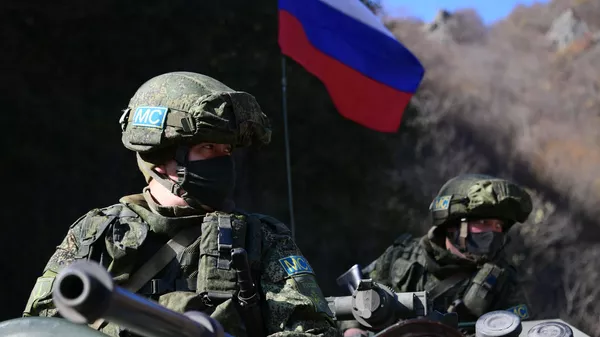"The aircraft delivered 10 BTR-82A armored personnel carriers, logistics equipment, as well as about 30 military personnel from peacekeeping units", the ministry said in a statement on Sunday.
Two Antonov An-124 Ruslan military transport aircraft carrying Russian peacekeepers and equipment have arrived in Armenia’s capital pic.twitter.com/vl7VEt4EdU
— Sputnik (@SputnikInt) November 15, 2020
On Saturday, the Russian Defence Ministry said 20 aircraft with 170 peacekeepers had been sent to the Nagorno-Karabakh region. On Friday, Russian Defence Minister Sergei Shoigu stated that more than 1,100 peacekeepers had been deployed to Nagorno-Karabakh with 73 flights made.
According to the commander of the recently-deployed Russian peacekeeping contingent, Rustam Muradov, Armenia and Azerbaijani adhere to a ceasefire in Nagorno-Karabakh, and the situation in the war-torn region is stabilising.
Earlier this week, Russian President Vladimir Putin announced that he had signed an agreement with Armenian Prime Minister Nikol Pashinyan and the president of Azerbaijan, Ilham Aliyev, to end the conflict in Nagorno-Karabakh. The ceasefire entered into force at 00:00 Moscow time on Tuesday (21:00 GMT on Monday). The agreement also paved the way for the deployment of 1,960 Russian peacekeepers to the region.
Spokeswoman of the Armenian Defense Ministry, Shushan Stepanyan, said on Thursday that Aremanian and Russian forces were protecting the airspace of both Armenia and the self-proclaimed Nagorno-Karabakh Republic. Stepanyan stressed that the airspace was closed for all flights except military aviation.
The Armenian prime minister described the deal as a very hard decision to make. Following the announcement, opposition-led demonstrations against the Nagorno-Karabakh ceasefire agreement erupted in the Armenian capital, with protesters calling on Nikol Pashinyan to resign.
The frozen conflict in the Nagorno-Karabakh region escalated into a full-scale war on 27 September, with both sides holding each other responsible for the renewed hostilities.
The Nagorno-Karabakh conflict erupted in the late 1980s, with the predominantly Armenian-populated autonomy proclaiming independence from Azerbaijan in 1991. As a result, Baku and Yerevan waged a full-scale war for the area between 1992 and 1994 that claimed the lives of around 40,000 troops and civilians from both sides.
A ceasefire was signed in 1994, but the conflict remained frozen, and the self-proclaimed Nagorno-Karabakh Republic still continues to be an unrecognised state.





